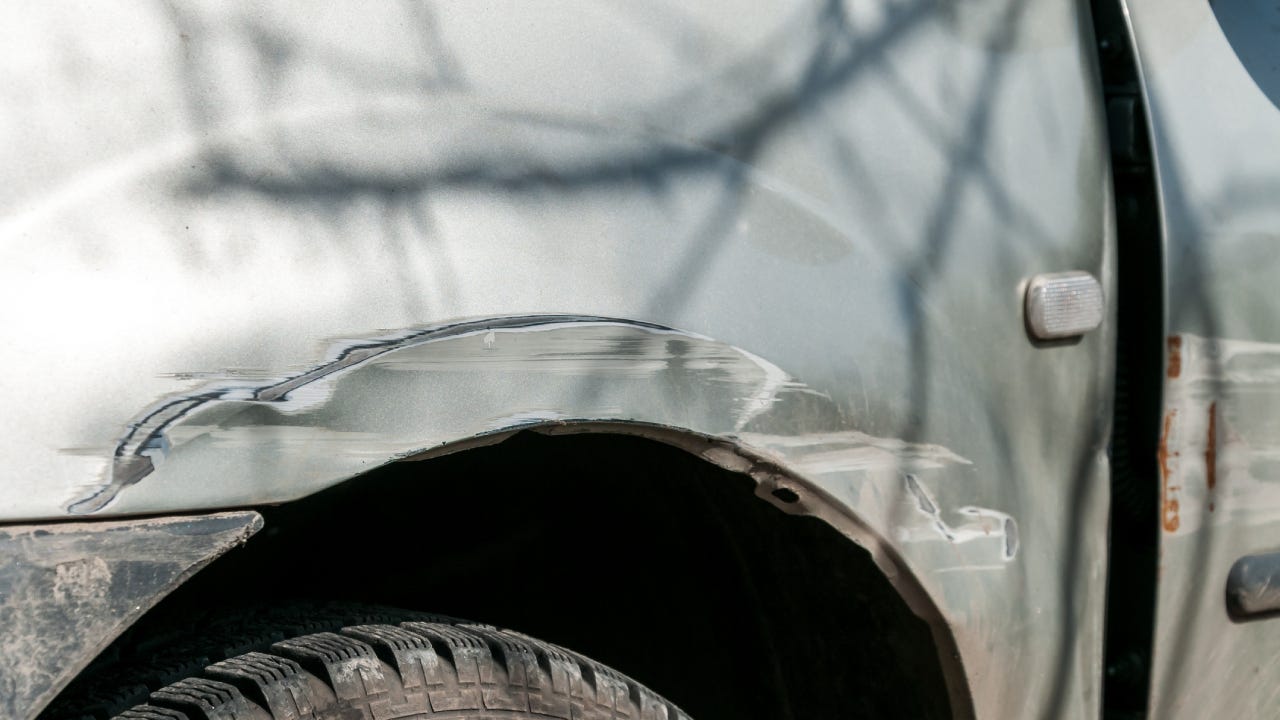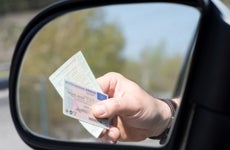What to do after a hit-and-run in Massachusetts

The Bankrate promise
At Bankrate, we strive to help you make smarter financial decisions. To help readers understand how insurance affects their finances, we have licensed insurance professionals on staff who have spent a combined 47 years in the auto, home and life insurance industries. While we adhere to strict , this post may contain references to products from our partners. Here's an explanation of . Our content is backed by Coverage.com, LLC, a licensed entity (NPN: 19966249). For more information, please see our .
A hit-and-run in Massachusetts occurs when one party involved in an accident flees without sharing their information. Hitting a fixed object, like a mailbox or parked car, without notifying the property owner is also considered a hit-and-run. The following guide explains how a hit-and-run can affect auto insurance for both the perpetrator and the victim.
Hit-and-runs in Massachusetts
Hit-and-run law in Massachusetts states that when a driver is aware that they have hit someone or something, they must stop to determine if there has been injury or damage. If they do not stop and give the other driver, or the homeowner in the case of hitting a stationary object, their name and insurance information, they are guilty of a hit-and-run. If they stop, but refuse to give information or give incorrect information, it is still a hit-and-run.
Nationally, there were 2,564 fatalities in hit-and-run crashes in 2020, an increase of 26 percent over 2019. There are serious consequences for drivers who leave the scene of an accident without identifying themselves and giving aid if they are able.
Massachusetts hit-and-run laws
Hit-and-run Massachusetts statutes are clear: if you’re involved in a crash, even if it’s just a fender bender, you must stop, assess damages and identify yourself, according to the Massachusetts official driver’s manual. If you leave a crash, even if you are not at fault, you could be criminally charged with a violation for leaving the scene of an accident. You would also face the following penalties.
- Up to $200 and/or up to two year’s imprisonment, and license suspension of six months or longer if the crash caused damage to another vehicle or property.
- Up to $1,000, up to two year’s imprisonment and license suspension of one year or longer, if the crash caused personal injury to any person that does not result in death.
- Up to $5,000 and 2.5 years in jail, or up to 10 years in state prison and a minimum three-year license suspension if the crash caused personal injury that resulted in death.
You may also be subject to up to six years of insurance surcharges and your driver’s license could be suspended. Finally, if you hit and injure or kill a cat or dog and fail to notify the animal’s owner or the local police, you can also be fined.
Will a hit-and-run claim raise my insurance in Massachusetts?
The cost of car insurance for a driver with a clean record in Massachusetts averages $410 per year for state-mandated minimum coverage, and $1,683 for full coverage, which includes collision and comprehensive insurance. Massachusetts drivers with an at-fault accident on their record pay, on average, 60 percent more for coverage than those with clean driving records. A hit-and-run is often considered more severe than a standard at-fault accident, so if you’re convicted of fleeing the scene of the accident, your coverage surcharge could be even greater.
If you are the victim of a hit-and-run and the perpetrator is not located, you can file a claim for the damage with your own insurance company (as long as you have collision coverage). This will likely raise your rates, but usually not as much as filing a claim for an at-fault accident. If the perpetrator is located but does not have insurance, uninsured/underinsured motorist coverage could help pay for the damage.
5 things to do after a hit-and-run in Massachusetts
You may be shaken up after a hit-and-run, but do your best to remain calm and follow the steps we have outlined below. Do not attempt to follow a driver who has left the scene; it is important to stay on the scene yourself to give aid and offer information to police and medical personnel.
- Check for injuries. If you or anyone else involved is injured, your first call should be to 911, so that medical personnel can assist as quickly as possible.
- Move your car out of traffic if possible. This is especially true if you are on a busy highway or street. Be careful if you get out of your car that you are not placing yourself at risk of being hit by another car.
- Call the police. Even if there are no injuries, call the police and ask them to come so you can have a report filed. This is vital for insurance purposes.
- Gather information. Once you are safe and the police are on the way, take some photos, if you can do so safely, of your car and the site. If there are any eyewitnesses, ask them what they saw, and write down any identifying characteristics of the car that left the scene. Ask them to stay with you until the police arrive, so they can add their information to the official report.
- Contact your insurance company. Don’t delay on this. You want to open a file for your case as quickly as possible. You may be able to do this on your company’s website — if not, call your insurer, with as much information as you have on hand.
Will insurance cover a hit-and-run?
There are several types of Massachusetts hit-and-run insurance. Any of these may come into play if you are the victim of a hit-and-run accident.
- Collision: This coverage (unlike property damage liability, which covers the other car) covers damage to your own car. Your insurance company will help cover the costs to repair or replace your vehicle, up to its actual cash value determined at the time of the claim, and you’ll cover the deductible you chose for this coverage.
- Uninsured motorist bodily injury: This insurance is required and covers injuries that you and your passengers face following an accident if the other driver doesn’t have insurance. But your insurer may require proof that the other driver wasn’t insured, which may or may not be possible following a hit-and-run.
- Uninsured motorist property damage: Again, this insurance may help with damage to your car, but there may be restrictions on its use depending on your insurer.
- Personal injury protection (PIP): Since Massachusetts is a no-fault state, you are required to carry PIP, which pays for medical payments, wages and more, no matter who is at fault in the accident.
Frequently asked questions
-
-
The cost of car insurance in Massachusetts will depend on several factors that are specific to you, including your driving history, car make and model, and location. On average, a minimum-coverage policy in the state costs $410 per year, while full coverage policies average $1,683 per year in the state.
-
Finding the best car insurance company for your needs isn’t difficult. There are a number of insurers writing solid policies in Massachusetts, with robust coverage options to protect you in the event of a hit-and-run. You may want to ask for quotes from several carriers so you can see who gives you the most affordable option for your own policy.
-
Whether a hit-and-run is considered a felony in Massachusetts will depend on the severity of the accident. Leaving the scene of an accident that causes property damage or injuries is a misdemeanor. However, if a driver leaves the scene of an accident where there are injuries that result in death, it is considered a felony with a mandatory minimum jail sentence of one year along with other penalties.
-
Generally, a hit-and-run will remain on your record for six years in Massachusetts. You will be given a certain number of points — five is the usual number, unless there is a death resulting from the accident — and your insurer will have access to this information during those six years when they determine your premium.
-
Related Articles



